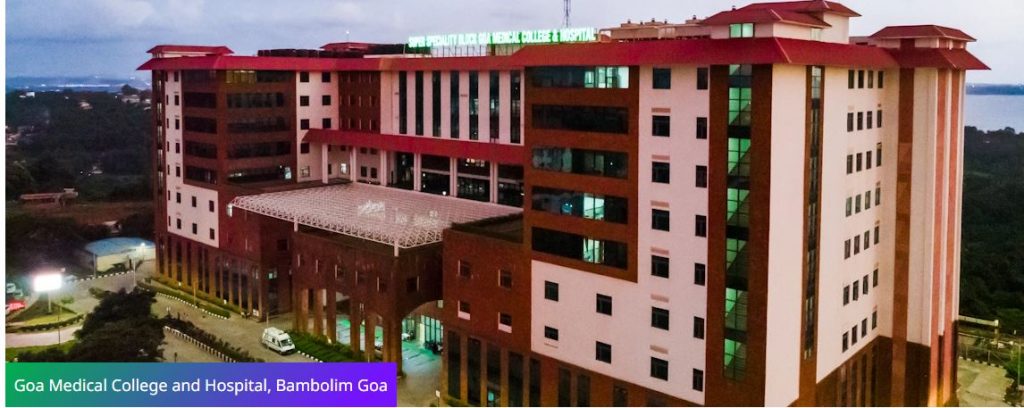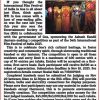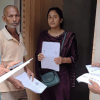Goa is abuzz with excitement as vintage bike and car owners, users, collectors and fans are decking […]

GMC DRIVEN BY RANE FAMILY HEALTH CONCERNS!
Cover Story, May 17- May 23, 2025 May 16, 2025INVESTMENTS in new health and medical facilities at the Goa Medical College & Hospital is driven not by concern over the health of the people of Goa. Mega investments in additional health infrastructure are being dictated almost exclusively by the health concerns of former chief minister of Goa, the Pratapsingh Raoji Rane family. It is not widely known that the Institute of Psychiatric Health in the GMC complex was set up primarily for the benefit of Vijaya Devi Rane, wife of the then chief minister Pratapsingh Roaji Rane. Vijaya Devi Rane suffers from a bipolar disorder, which requires continuous medical attention and intervention. Bipolar disorder is a mental health condition characterized by extreme mood swings. This includes emotional highs and lows. Patients swing between euphoria and deep depression. Those who have known Vijaya Devi Rane are familiar with her sudden mood changes.
It is to the credit of Pratapsingh Raoji Rane that he accepted the mental health status of Vijaya Devi Rane. Pratapsingh Rane did not build the Taj Mahal for his wife, though he was made the chairman of the Bal Bhavan and the Sanjay Centre for Special Education Goa. Pratapsingh Rane set up the Institute of Psychiatry in the GMC complex to provide world-class facilities for Vijaya Devi Rane. This has benefited generations of Goans with psychiatric disorders, including those induced by drug overdoses.
CANCER CARE
PRESENT Chief Minister Pramod Sawant did not push for a comprehensive cancer treatment facility in Goa. This should have been the obvious response when former Chief Minister Manohar Parrikar developed pancreatic cancer. In the absence of facilities in Goa, Manohar Parrikar had to be treated at the Tata Cancer Hospital in Mumbai and abroad later on at the Memorial Sloan Kettering Hospital in New York, USA.
Unfortunately, since the condition of Manohar Parrikar was diagnosed at a very late stage, nothing much could be done except put him in terminal care. Ever after undergoing treatment at the Sloan Kettering Cancer Hospital in New York it is a credit to his mental strength that he continued to function as chief minister right up to the end of his life.
Since Manohar Parrikar did not want to impose a burden on the GMC, a flat owned by the former advocate general, Atmaram NS Nadkarni, was converted into a critical care unit for Manohar Parrikar. Manohar Parrikar is the architect of the Atal Setu Bridge over the Mandovi river and his last public appearance was at the inaugural function of the Atal Setu Bridge completion, when a tube was attached to his body for his bodily functioning. I recall distinctly that Manohar Parrikar responded to media concerns with the gallant and sentimental words — “Hosh bhi hai aur josh bhi hai.”
IT was only when Vijaya Devi Rane developed cancer that Health Minister Vishwajit Rane, her son, pushed the project for a full-fledged cancer hospital in Goa. A beginning was made in setting up a cancer treatment facility under Dr Anupama Borkar, who was working at the Bombay Hospital in Mumbai and who had trained at the Tata Cancer Hospital. The Tata Cancer Memorial Hospital is the largest and the first cancer treatment facility in the country. Tata Cancer has partnered with several state governments in setting up cancer treatment facilities all over the country. Many distinguished Goans have benefited from the Tata Cancer Hospital, from diagnoses to treatment. An outstanding example is Jnanpith award-winner, Damodar Mauzo, was suffered a very rare form of cancer affliction, male breast cancer.
Admittedly, the private Manipal Hospital has been offering chemotherapy for cancer patients for almost two decades. However, Manipal does not have any facilities for treating advanced or serious cancer cases like say colon cancer and pancreatic cancer.
Under the leadership of Vishwajit Rane, a full-fledged cancer treatment facility is coming up in the new GMC complex. A new building with state-of-the-art facilities for the treatment of cancer, with an investment of Rs310 crore, is coming up very fast. Vishwajit is personally supervising the project for the benefit of Goan cancer patients, driven by his concerns for his own mother Vijaya Devi’s cancer remission.
GMC ADVANCES
THE GMC now boasts of advanced facilities for aneurysms, which are blood clots that may take place in any part of the body. Aneurysms which occurs suddenly can lead to crippling strokes. This blood clotting often occurs in the heart or the neck arteries. 90% of ischemic strokes are caused by blood clots. As in the case of blockage of the arteries in the heart, the GMC has now acquired facilities for neuro interventions.
As in the case of angiography, neuro interventions involve stenting of the blocked areas of blood vessels connected to the brain. Fortunately, Goa has the services of highly trained neurologist Dr Sanat Bhatkar, who specializes in neuro-interventions.
The Rane family health concerns have contributed in a major way to the strengthening of the superspecialty facilities at the GMC. It’s fortunate how the health conditions of our Goan VIP and VVIP politicians and their families have always played a major role in the creation of additional medical infrastructure in Goa and especially the GMC.
The expansion of the Endocrinology department, headed by Dr Ankush Desai, was facilitated by the intervention of former chief minister, Laxmikant Parsekar. Both the Laxmikant Parsekar and his wife suffered from very acute diabetes. They were cured by Dr Ankush Desai. Dr Ankush Desai in fact was brought to Goa during the tenure of the late Dr Wilfred Mesquita who was the health minister one time. Dr Ankush Desai was working at the All India Institute of Medical Sciences in New Delhi and he faced strong opposition within the GMC from senior doctors in the Medicine department who were supported by a leading insulin manufacturing multinational.
It was only thanks to the support extended by former chief minister, Laxmikant Parsekar, that GMC today has a full-fledged Endocrinology department. The Cardiac department too was born because of repeated heart attacks among our politicians. It was Chief Minister Manohar Parrikar who took the initiative to set up a separate cardiac unit in the GMC.
Dr Guruprasad Naik, a veteran cardiologist practicing in the United States, was invited on contract basis to set up the sophisticated the Cardiac department. Dr Guruprasad secured the services of Dr Manjunath Desai, who had trained in the United Kingdom. Dr Shirish Borkar was appointed for cardiac surgery. Dr Shirish Borkar had trained under Dr Nitu Mandke, who rescued the late Maharashtra strongman Shiv Sena politician Bal Thackerey from his heart attacks with surgery time and again.
CARDIAC CARE
THE GMC’s Cardiac department even hires specialized nurses trained in cardiac care. I myself owe my life to the Cardiac department when I had a severe multi-drug reaction heart condition on time and had to be rushed to the GMC’s Cardiac Emergency Unit and a pacemaker had to be inserted for me for a while, this is about a decade ago.
IT is ironic but true that oftentimes the facilities in our public hospitals in India are developed, upgraded and dictated by the health of our country’s politicians. The All India Institute of Medical Sciences, which is the leading health specialty in the country, was set up to deal with the wealthy classes and political VVIPs health issues. Since most of the politicians in Goa were in their 70s at one time, there was an urgent need for top health facilities. Dr Manmohan Singh was one of the prime ministers treated at the All India Medical Sciences Hospital but when he had a major heart attack; it is perhaps less known that when he had further heart problems later on he came to the Asian Heart Hospital in Mumbai for further surgery by the now legendary Dr Ramakant Panda.















